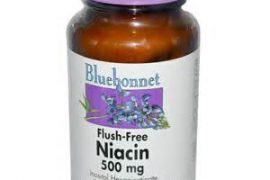by Andrew W. Saul Ph.D.
(OMNS Feb 15, 2014) Don’t get bogged down by silly claims that multiple vitamins kill, or that antioxidants are bad for you. It is high time to take a look at the record, and review what published medical research actually has been saying for eight decades.
Year Research
1935 Claus Washington Jungeblut, MD, professor of bacteriology at Columbia University, first publishes on vitamin C as prevention and treatment for polio; in the same year, Jungeblut also shows that vitamin C inactivates diphtheria toxin.
1936 Evan Shute, MD, and Wilfrid Shute, MD, demonstrate that vitamin E-rich wheat germ oil cures angina.
1937 Dr. Jungeblut demonstrates that ascorbate (vitamin C) inactivated tetanus toxin.
1939 William Kaufman, MD, PhD, successfully treats arthritis with niacinamide (vitamin B3).
1940 The Shute brothers publish that vitamin E prevents fibroids and endometriosis, and is curative for atherosclerosis.
1942 Ruth Flinn Harrell, PhD, measures the positive effect of added thiamine (B1) on learning.
1945 Vitamin E is shown to cure hemorrhages in the skin and mucous membranes, and to decrease the diabetic’s need for insulin.
1946 Vitamin E is shown to greatly improve wound healing, including skin ulcers. It is also demonstrated that vitamin E strengthens and regulates heartbeat, and is effective in cases of claudication, acute nephritis, thrombosis, cirrhosis, and phlebitis; also, William J. McCormick, MD, shows how vitamin C prevents and also cures kidney stones.
1947 Vitamin E is successfully used as therapy for gangrene, inflammation of blood vessels (Buerger’s disease), retinitis, and choroiditis; Roger J. Williams, PhD, publishes on how vitamins can be used to treat alcoholism.
1948 Frederick R. Klenner, MD, a board-certified specialist in diseases of the chest, publishes cures of 41 cases of viral pneumonia using very high doses of vitamin C.
1949 Dr. Kaufman publishes The Common Form of Joint Dysfunction.
1950 Vitamin E is shown to be an effective treatment for lupus erythematosus, varicose veins, and severe body burns.
1951 Vitamin D treatment is found to be effective against Hodgkin’s disease (a cancer of the lymphatic system) and epithelioma.
1954 Abram Hoffer, MD, PhD, and colleagues demonstrate that niacin (vitamin B3) can cure schizophrenia; the Shutes’ medical textbook Alpha Tocopherol in Cardiovascular Disease is published; and Dr. McCormick reports that cancer patients tested for vitamin C were seriously deficient, often by as much as 4,500 milligrams.
1955 Niacin is first shown to lower serum cholesterol.
1956 Mayo Clinic researcher William Parsons, MD, and colleagues confirm Hoffer’s use of niacin to lower cholesterol and prevent cardiovascular disease; Dr. Harrell demonstrates that supplementation of the pregnant and lactating mothers’ diet with vitamins increases the intelligence quotients of their offspring at three and four years of age.
1957 Dr. McCormick publishes on how vitamin C fights cardiovascular disease.
1960 Dr. Hoffer meets Bill W., cofounder of Alcoholics Anonymous, and uses niacin to eliminate Bill’s longstanding severe depression.
1963 Vitamin D is shown to prevent breast cancer.
1964 Vitamin D is found to be effective against lymph nodal reticulosarcoma (a non-Hodgkin’s lymphatic cancer).
1968 Linus Pauling, PhD, publishes the theoretical basis of high-dose nutrient therapy (orthomolecular medicine) in psychiatry in Science, and soon after defines orthomolecular medicine as “the treatment of disease by the provision of the optimum molecular environment, especially the optimum concentrations of substances normally present in the human body.”
1969 Robert F. Cathcart, MD, uses large doses of vitamin C to treat pneumonia, hepatitis, and, years later, acquired immune deficiency syndrome (AIDS).
1970 Dr. Pauling publishes Vitamin C and the Common Cold and Dr. Williams publishes Nutrition Against Disease.
1972 Publication of The Healing Factor: “Vitamin C” Against Disease by Irwin Stone, PhD.
1973 Dr. Klenner publishes his vitamin supplement protocol to arrest and reverse multiple sclerosis. So does Dr. HT Mount, reporting on 27 years of success using thiamine.
1975 Hugh D. Riordan, MD, and colleagues successfully use large doses of intravenous vitamin C against cancer.
1976 Ewan Cameron, MD, and other physicians in Scotland show that intravenous vitamin C improved quality and length of life in terminal cancer patients.
1982 In Japan, Murata, Morishige, and Yamaguchi show that vitamin C greatly prolonged the lives of terminal cancer patients.
1984 Robert F. Cathcart, MD, publishes on the vitamin C treatment of AIDS.
1986 Publication of How to Live Longer and Feel Better by Linus Pauling.
1988 Dr. Lendon H. Smith publishes Vitamin C as a Fundamental Medicine: Abstracts of Dr. Frederick R. Klenner, M.D.’s Published and Unpublished Work, now known as Clinical Guide to the Use of Vitamin C.
1990 American doctors successfully use vitamin C to treat kidney cancer, and in 1995 and 1996, other cancers.
1993 Large-scale studies show that vitamin E supplementation reduces the risk of coronary heart disease in men and women.
1995 Dr. Riordan and colleagues publish their protocol for intravenous vitamin C treatment of cancer.
2002 Vitamin E shown to improve immune functions in patients with advanced colorectal cancer, by immediately increasing T helper 1 cytokine production.
2004 Doctors in America and Puerto Rico publish more clinical cases of vitamin C successes against cancer.
2005 Research sponsored by the U.S. National Institutes of Health shows that high levels of vitamin C kill cancer cells without harming normal cells.
2006 Canadian doctors report intravenous vitamin C is successful in treating cancer.
2007 Harold D. Foster and colleagues publish a double-blind, randomized clinical trial showing that HIV-positive patients given supplemental nutrients can delay or stop their decline into AIDS.
2008 Korean doctors report that intravenous vitamin C “plays a crucial role in the suppression of proliferation of several types of cancer,” notably melanoma. And, natural vitamin E is demonstrated to substantially reduce risk of lung cancer by 61%.
2009, 2010, 2012 Intravenous Vitamin C and Cancer Symposiums filmed and made available for free-access online. http://www.riordanclinic.org/education/symposium/s2009 (twelve lectures), http://www.riordanclinic.org/education/symposium/s2010 (nine lectures) and http://www.riordanclinic.org/education/symposium/s2012 (eleven lectures)
2011 Each 20 micromole/liter (µmol/L) increase in plasma vitamin C is associated with a 9% reduction in death from heart failure. Also, B complex vitamins are associated with a 7 percent decrease in mortality, vitamin D with an 8 percent decrease in mortality.
2012 Vitamin C shown to prevent and treat radiation-damaged DNA.
2013 B-vitamin supplementation seen to slow the atrophy of specific brain regions that are a key component of the Alzheimer’s disease process and are associated with cognitive decline.
2014 In patients with mild to moderate Alzheimer’s disease, 2,000 IU of natural vitamin E slows the decline compared to placebo. Data from 561 patients showed that those taking vitamin E function significantly better in daily life, and required the least care. Vitamin C greatly reduces chemotherapy side effects and improves cancer patient survival.
For specific references on these subjects, just copy and paste any of the brief descriptions above into a search engine and press “enter.” Doctors and reporters that say “they have not seen any good evidence that vitamins cure disease” are telling you the truth: yes, they have never seen it. That’s not because it isn’t available; it’s because they have never done even this simple step.
Copy, paste and search. There is a whole body of knowledge out there. Take a look and decide for yourself.
Nutritional Medicine is Orthomolecular Medicine
Orthomolecular medicine uses safe, effective nutritional therapy to fight illness. For more information: http://www.orthomolecular.org
To locate an orthomolecular physician near you: http://orthomolecular.org/resources/omns/v06n09.shtml
Andrew W. Saul, Ph.D. (USA), Editor and contact person. Email: omns@orthomolecular.org This is a comments-only address; OMNS is unable to respond to individual reader emails. However, readers are encouraged to write in with their viewpoints. Reader comments become the property of OMNS and may or may not be used for publication.
To Subscribe at no charge: http://www.orthomolecular.org/subscribe.html
OMNS free subscription link http://orthomolecular.org/subscribe.html
OMNS archive link http://orthomolecular.org/resources/omns/index.shtml
 About the Author:
About the Author:
“The Megavitamin Man”, has 40 years of experience in natural health education. His world famous, free-access educational website, www.DoctorYourself.com, is peer reviewed and the largest non-commercial natural health resource on the internet.






